Starting today and over the next month, hundreds of millions of people around the world will watch the 2014 World Cup soccer tournament play out in 12 cities around Brazil, a nation that has won the event five times, more than any other country. Brazil hosted the World Cup once before, in 1950, when the national team placed second behind Uruguay. Recent Brookings research has examined Brazil’s rise and mapped its metro areas. Here are some highlights of that research.
• Brazil’s population is nearly 203 million, the most populous state in Latin America and 5th largest in the world.
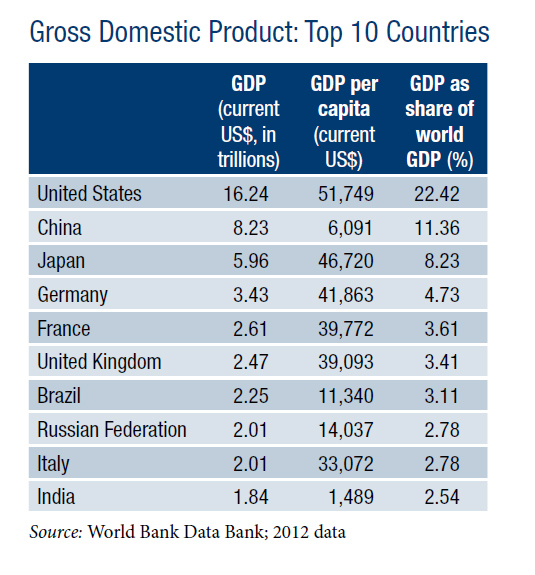
• Brazil’s GDP is 7th in the world in US$, and has a 3.11 percent share of world GDP (2012 data).
• Brazil ranks 23rd in humanitarian assistance among international donors.
• São Paulo is Brazil’s largest city, and tenth largest in the world, with a population (in 2012) over 20 million.
• In terms of economic performance, São Paulo ranks 217th out of 300 world metros (2011-12). (click map for larger image)
• São Paulo has the highest number of helicopters per capita in the world, in part because of its size and traffic congestion.
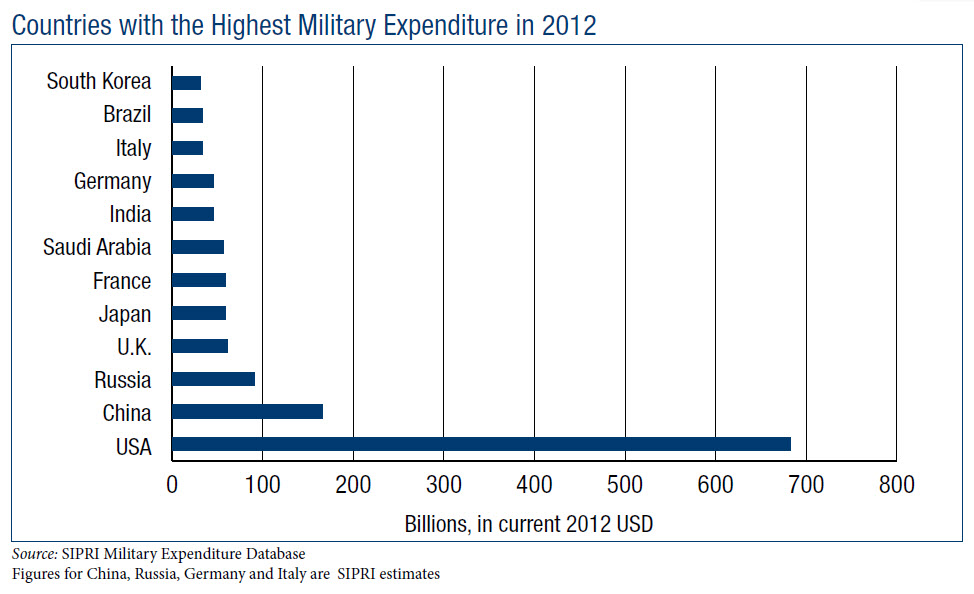
• Brazil spends 1.5 percent of its GDP on defense (the U.S. spends about 3.8 percent).
• In 2012, Brazil was 68th in the world in terms of military expenditure as percentage of GDP, and 11th in the world in terms of total dollars spent (measured in current 2012 US$).
• Rio de Janeiro, Brazil’s second largest city, is 100th out of 300 global metros in terms of economic performance (2011-12). (click map for larger image)
• Fourteen percent of Rio’s population lives in favelas (“irregular settlements”), but four other cities have higher shares.
To learn more about the Brookings research from which these facts were taken, visit:
Brazil’s Rise: Seeking Influence on Global Governance
by Harold Trinkunas
This paper documents Brazil’s attempts to rise historically in the face of the mismatch between its aspirations, capabilities and opportunities and it shows how Brazil has adjusted its strategy after each attempt with the eventual aim of becoming a major power.
Metro Brazil: An Overview of the Nation’s Largest Metropolitan Economies
by Jill Wilson and Nicole Prchal Svajlenka
To coincide with the Global Cities Initiative’s international forum in São Paulo, Brazil, the Metropolitan Policy Program is providing economic snapshots of the Brazilian metro areas that rank among the world’s 300 largest metropolitan economies. Using data from the latest Global MetroMonitor, these profiles illustrate how metropolitan areas contribute to national economic growth.
Podcast: What You Should Know about the Rise of Brazil and the Rest of Latin America
with Harold Trinkunas and Fred Dews
As nations across Latin America have become wealthier and more stable in recent years, they are seeking to engage with the world, including the United States, on a more level playing field. In this podcast, Harold Trinkunas describes Latin America’s economic, social, and political challenges and opportunities, with particular attention given to Brazil’s rise as a potential major power.
Elina Saxena contributed to this post.
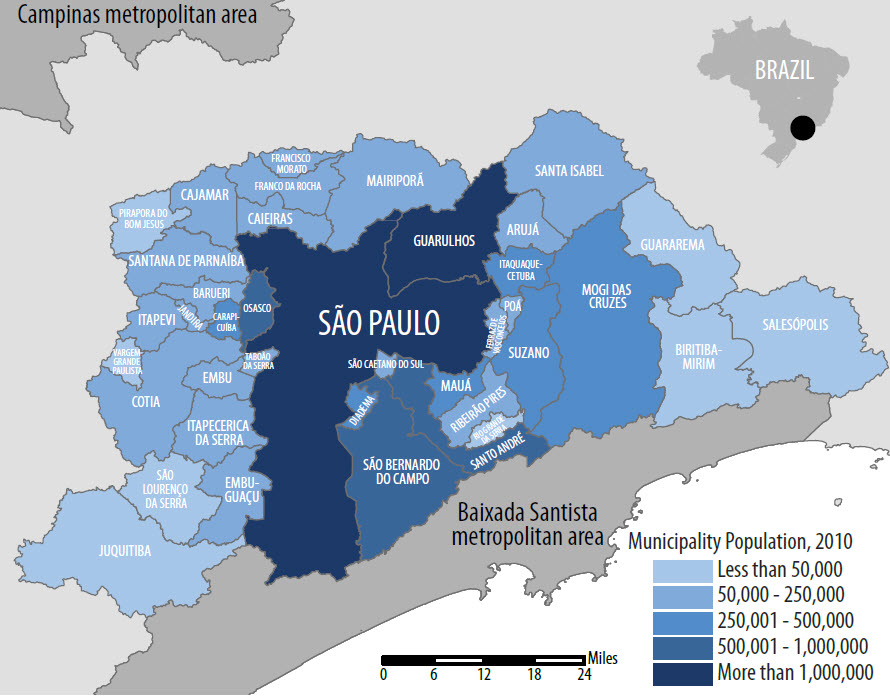
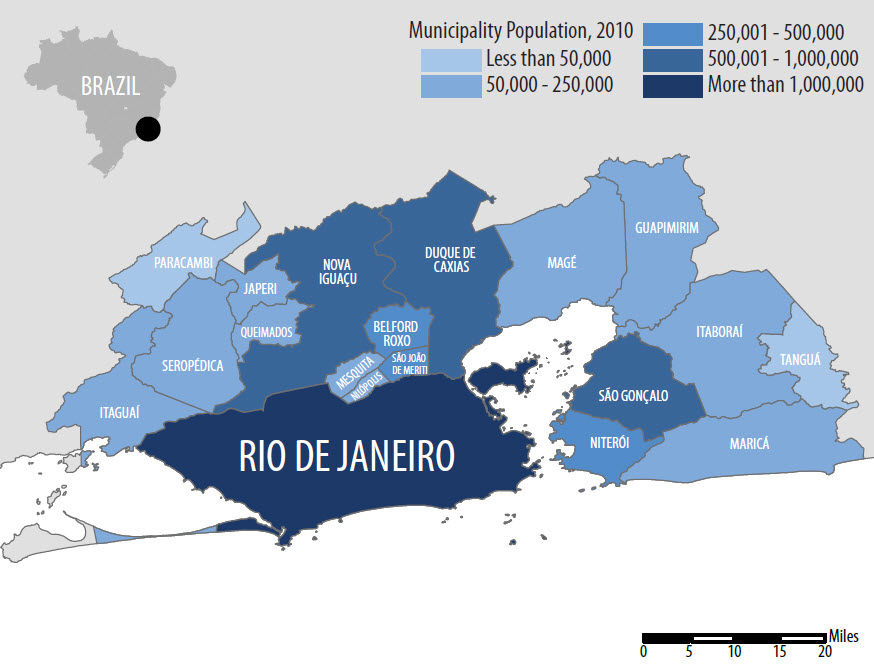

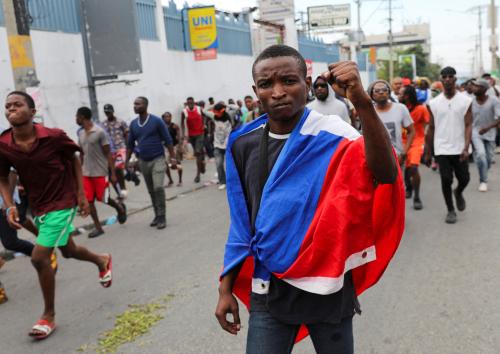
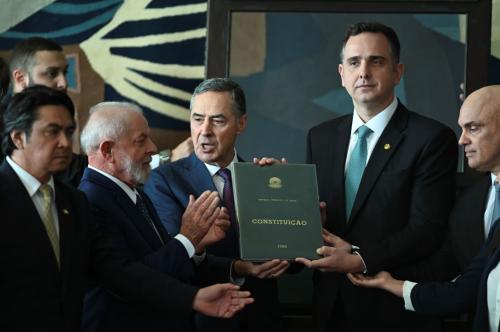
Commentary
10 Things to Know about Brazil as You Watch the World Cup
June 12, 2014